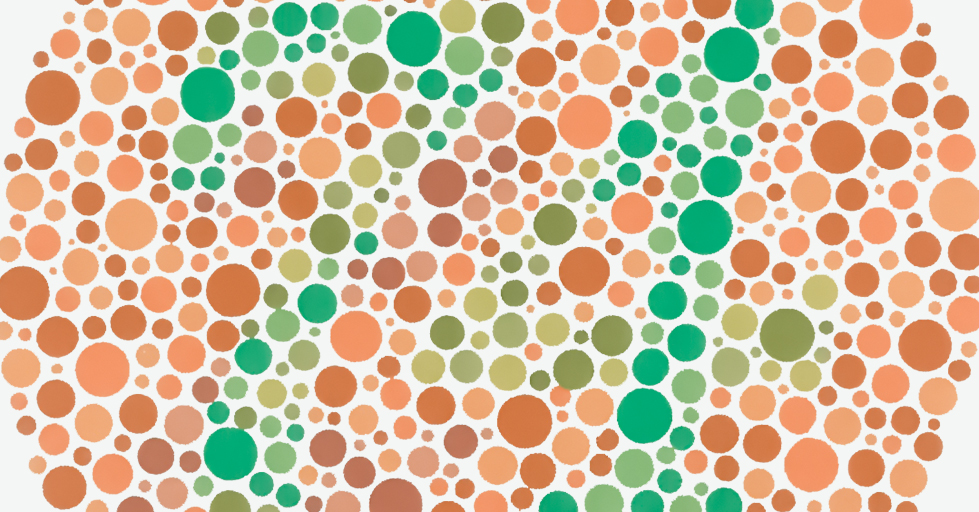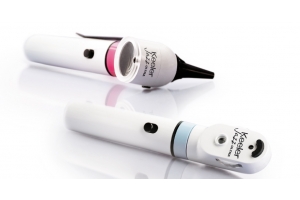
Today, there are an estimated 300 million people who suffer from color vision deficiency (CVD). How prevalent is the condition? Impacting more men than women, an estimated one in 12 men suffer from color blindness. On the other hand, only one in 200 women can be classified as color blind.
Color blindness is a disability where people have difficulty distinguishing specific colors, particularly reds and greens. This can make it difficult to see objects or use patterns with those colors.
There are many options for correcting color blindness, including glasses, contact lenses, surgery, and software programs that work on digital devices such as computers and tablets. However, to really understand color blindness, we must walk through the various types that can occur. Let's take a closer look at the different types of color blindness and the treatments used to correct them.
Understanding the Different Types & Causes of Color Blindness
Having color blindness means you may not be able to see colors as others do, or you may not see any color at all.
Monochromacy
Monochromacy (totally color blind) explains the inability to see any colors at all. One can only tell the difference between brightness and darkness (also called "monotony").
Red/Green Color Blindness
Red/Green Color Blindness is the most common form of hereditary, congenital, or acquired color vision deficiency. In fact, it's estimated that 98% of those with color blindness suffer from this type. This type of color blindness can be broken down into two categories:
- Protan-type
- Deutan-type
Blue/Yellow Color Blindness
As a less common type of color blindness, those who suffer from Blue/Yellow color blindness have trouble distinguishing between the two colors. It does occur more often in men than women because the gene for this disorder is found on the X chromosome.
Hereditary Color Vision Deficiency
Those with Hereditary Color Vision Deficiency have a genetic defect that causes them to be color blind from birth. The gene called "Tritan" is responsible for encoding the blue-sensitive pigment in our eyes which gives us our ability to see the blue light and affects how we perceive red and green colors.
Congenital Color Vision Deficiency
This type of color blindness is acquired during birth or early childhood, affecting both eyes, but only partially. A child with this condition will have trouble distinguishing between reds, greens, and yellows which can cause delayed development since children learn colors at a young age when they are still learning to speak.
Age-Related Color Vision Deficiency
This condition affects both eyes and is a gradual process as people age. As the name suggests, this condition does increase over time with age. According to research, many people lose their ability to distinguish colors clearly, starting at around age 70.
Disease-Related Color Vision Deficiency
In some cases, it can be caused by diseases that affect the retina, optic nerve, or parts of the brain involved with visual processing information from the eyes. This color blindness is usually diagnosed later in life, but it doesn't have to be an inevitable part of aging. Common conditions that can cause color deficits include:
- Glaucoma
- Sickle cell anemia
- Alzheimer's disease
- Macular degeneration
- Parkinson's disease
- Chronic alcoholism
- Leukemia
Injury-Related Color Blindness
This type is usually the result of some trauma to either the eyes, head, or parts of the nervous system involved with visual processing information from the eyes.
How Is Color Blindness Treated?
While there is no known cure for color blindness, there are a number of different treatments available. The manner in which color blindness will be treated is often directly related to the cause of the condition. Fortunately, most people who are color blind have normal vision in other regards. As such, certain adaptation methods can be employed to improve color perception.
Enchroma Color Blind Glasses
Enchroma color blind glasses filter out specific wavelengths of light to help people with color blindness better differentiate between colors. These innovative lenses feature technology that selectively filters out wavelengths at the exact point where the excessive overlap or confusion of color sensitivity occurs.
Color Blind Glasses
These specially-formulated glasses have a specially-tinted lens that helps the individual see more colors more accurately.
Color Blind Correction Software
Special software programs designed to help people with color blindness differentiate between colors better when using digital media like the internet, phones, or other types of electronic devices.
Color Correction Contact Lenses
Color correction contact lenses use customized filters to alter the wavelength of each color that passes into the eye. The filters are engineered uniquely for each individual and can help improve color perception.
How Is Color Blindness Diagnosed?
For most people, color blindness is more of a deficiency of hues in the spectrum the individual is capable of processing. If you have problems processing certain colors, it's important to speak to your eye care professional. When you do, they may perform one or more than one of the following diagnostic tests.
Ishihara Color Vision Testing Plate
The majority of eye doctors, optometrists, and eye care professionals use the Ishihara Color Vision Testing Plate Set. As the most commonly recognized test, most school children will have undergone this test at some point. This test is used to discern deficiencies, but isn't the strongest test for determining severity. The Ishihara Color Test is best suited for determining whether color vision deficiency exists at all.
The 3rd Edition City University Color Vision Test
The City University Color Vision Test is derived from a different color arrangement book and improves upon it. The purpose of this test is to gauge the degree and level of color deficiency for additional diagnosis.
Scientific and interpersonal improvements are ongoing in any scientific field, and ophthalmology is no exception. The third edition of the City University test is the most advanced to date. It is more accurate in helping ophthalmologists assess patients’ conditions, and swifter to carry out, which is more convenient for patients.
Got Questions? Reach Out to Keeler!
For over a century, Keeler has been leading the way with innovative solutions in the industry. We are the leading manufacturer of a range of cutting-edge ophthalmic instruments.
Contact Keeler today to learn more about any of our equipment.









